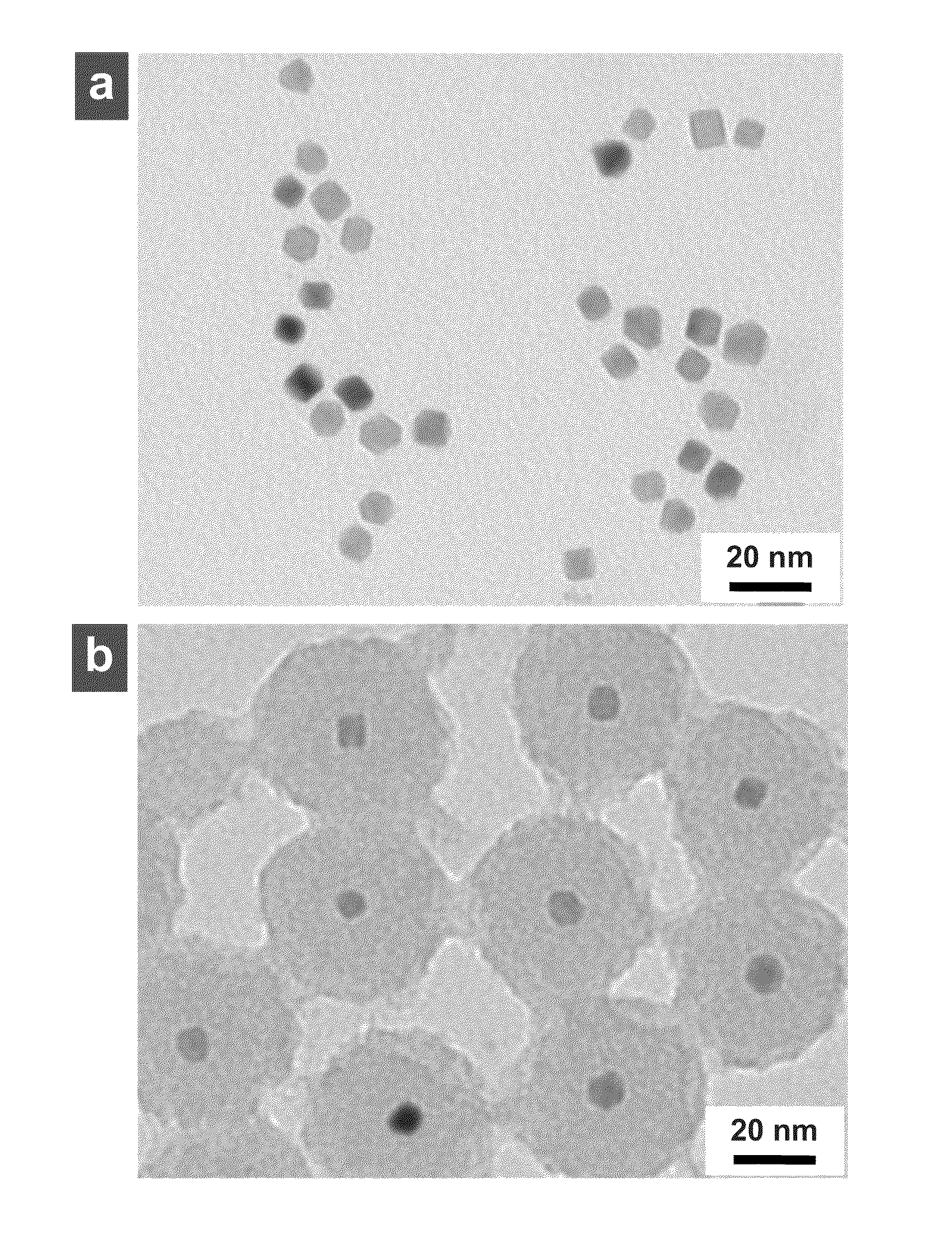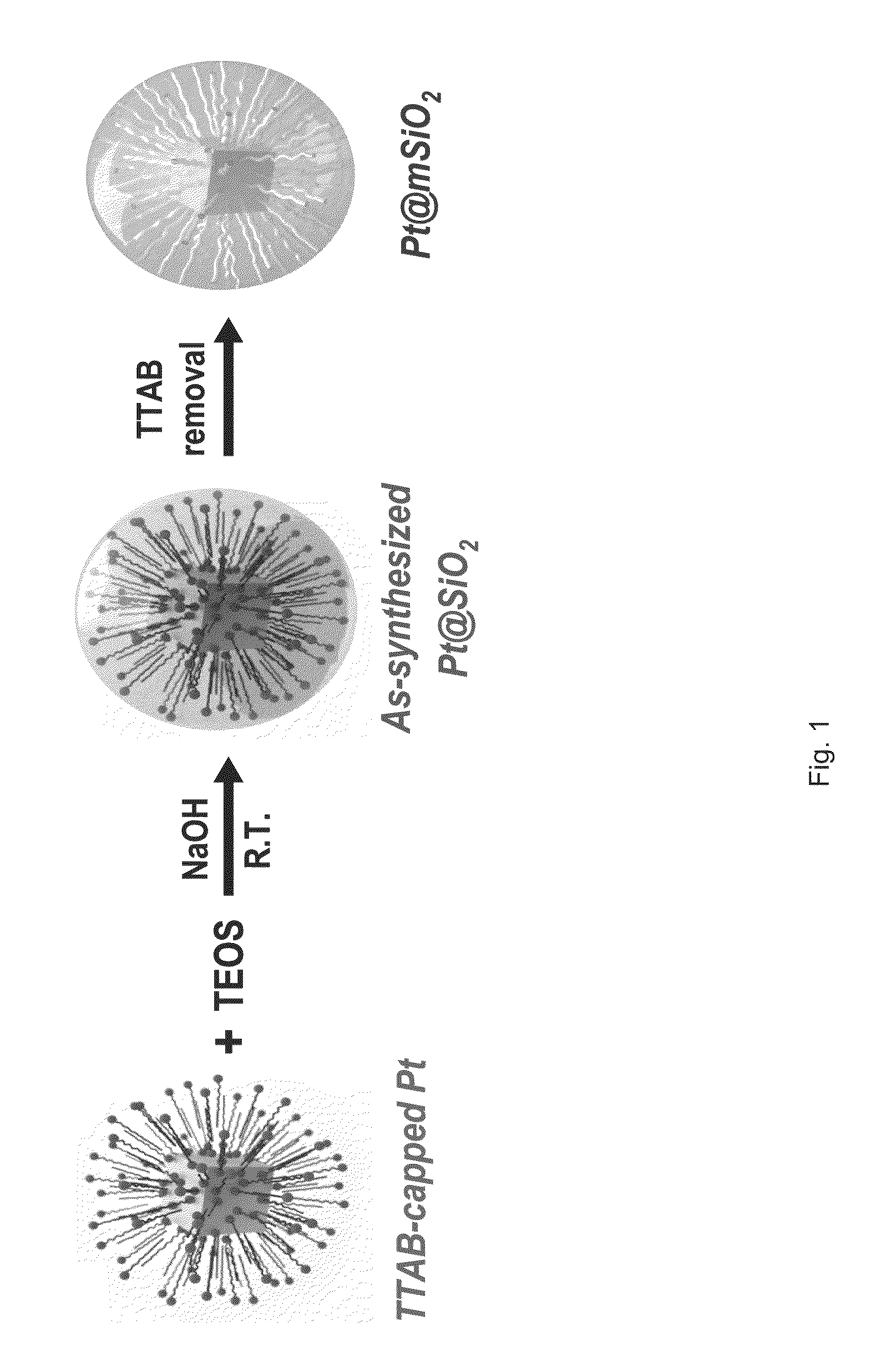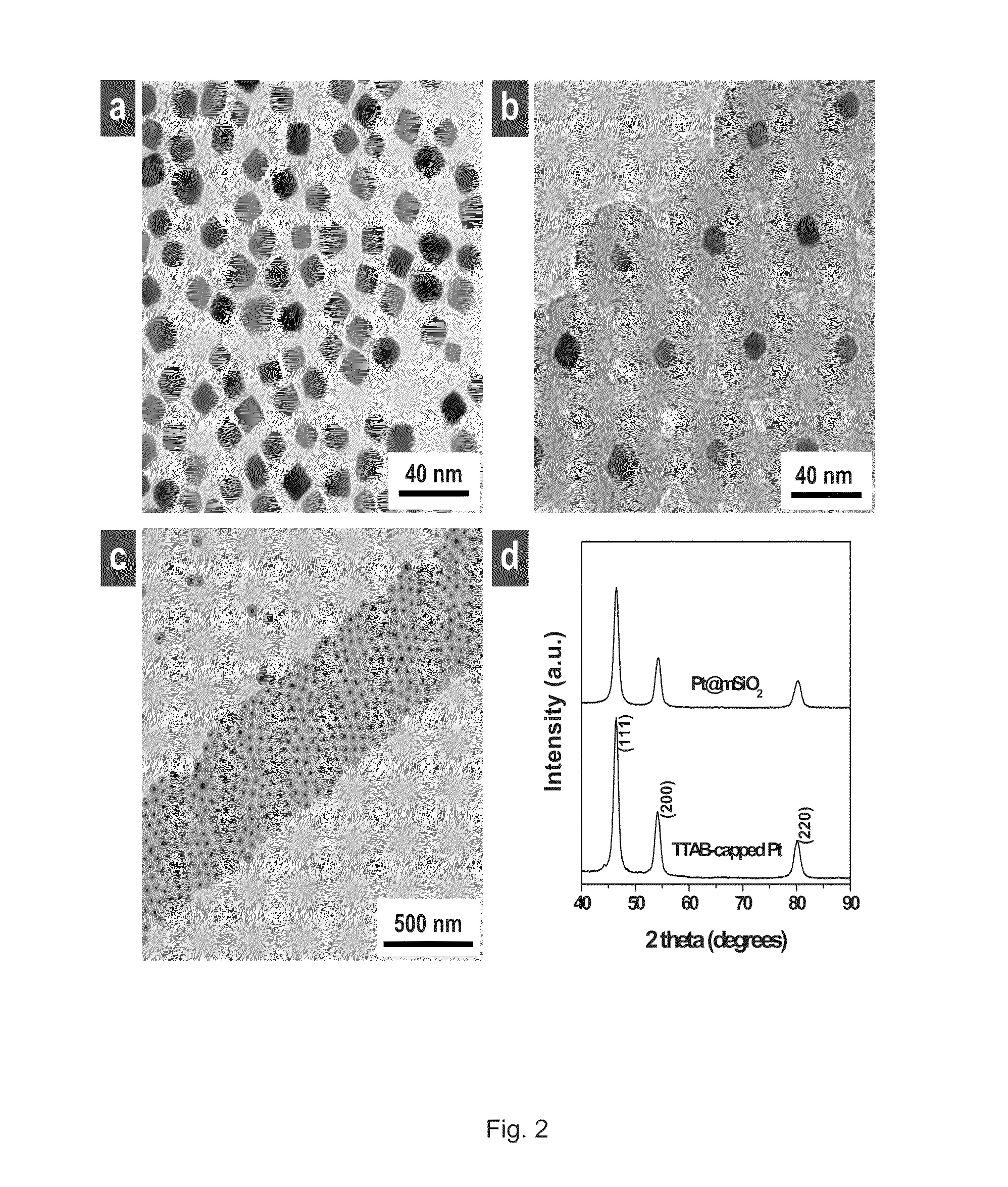Core-Shell Nanocatalyst For High Temperature Reactions
a nanocatalyst and high temperature technology, applied in the field of nanotechnology, can solve the problems of limiting the application of colloidal nanoparticle stabilizers, organic capping layers can decompose, and the capping agent that stabilizes colloidal nanoparticles cannot be used in high-temperature catalytic reactions
- Summary
- Abstract
- Description
- Claims
- Application Information
AI Technical Summary
Benefits of technology
Problems solved by technology
Method used
Image
Examples
Embodiment Construction
[0027]Embodiments of the present invention include a core-shell nanoparticle, a method of making a core-shell nanoparticle, and a method of using a core-shell nanoparticle as a nanocatalyst.
[0028]An embodiment of a core-shell nanoparticle of the present invention is illustrated in FIG. 7, as a cross-sectional view. The core-shell nanoparticle 700 includes a metal-oxide shell 702 and a nanoparticle 704. The metal-oxide shell 702 includes an outer surface 706, an inner surface 708, and pores 710. The pores 710 extend from the outer surface 706 to the inner surface 708. The inner surface 708 forms a void within the metal-oxide shell 702. The nanoparticle 704 fills the void within the metal-oxide shell 702. As used herein, the term “nanoparticle” means a particle having a dimension on the nanometer scale. Further, the term “nanoparticle” includes a quantum dot, a cubic nanoparticle, a cuboctahedron nanoparticle, a spherical nanoparticle, a pseudo-spherical nanoparticle, a faceted nanopa...
PUM
| Property | Measurement | Unit |
|---|---|---|
| cross-sectional size | aaaaa | aaaaa |
| temperatures | aaaaa | aaaaa |
| temperature | aaaaa | aaaaa |
Abstract
Description
Claims
Application Information
 Login to View More
Login to View More - R&D
- Intellectual Property
- Life Sciences
- Materials
- Tech Scout
- Unparalleled Data Quality
- Higher Quality Content
- 60% Fewer Hallucinations
Browse by: Latest US Patents, China's latest patents, Technical Efficacy Thesaurus, Application Domain, Technology Topic, Popular Technical Reports.
© 2025 PatSnap. All rights reserved.Legal|Privacy policy|Modern Slavery Act Transparency Statement|Sitemap|About US| Contact US: help@patsnap.com



